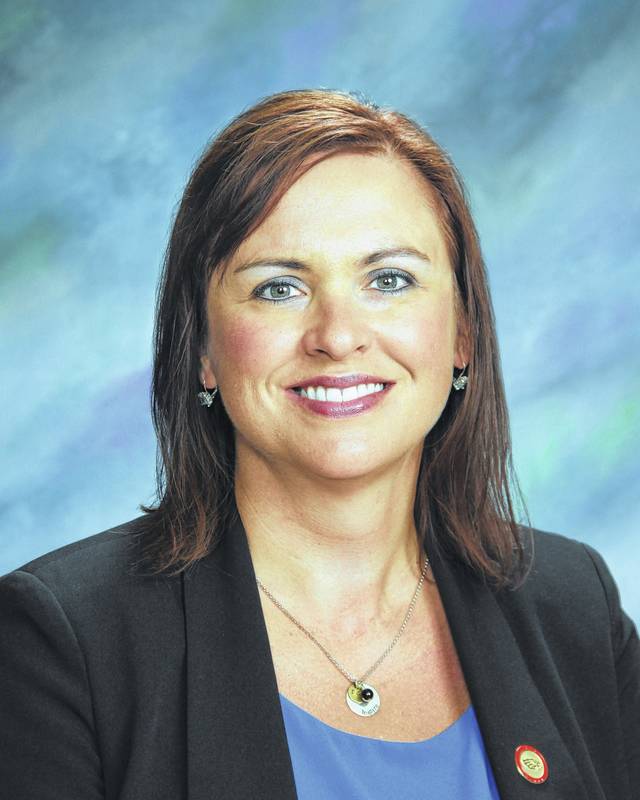

During the February Big Walnut Local School District Board of Education meeting, district assistant superintendent Mark Cooper said the district is exploring four options for accommodating the anticipated student population growth during the 2017-18 school year.
During last week’s board meeting Cooper provided additional information about the pros and cons of each option.
As he noted in February, Cooper said General Rosecrans Elementary School is already full, but is expecting to grow by two classrooms next school year.
Options on the table are:
1. Shuttle overflow students from GRE to Hylen Souders Elementary School located on Miller-Paul Road in Harlem Township;
2. Purchase a double-classroom trailer unit;
3. Rent space from nearby churches; and
4. Increase class sizes.
“Shuttling GRE students to Souders would mean those students would spend an additional 45- to 50-minutes each day on a bus.” Cooper said. “The cost is minimal, and students would remain inside a secure school building. The down side is each of those students would lose 150 hours instruction time during the school year.”
The math is easy. Each school day — removing lunches, recess, and other breaks – contains 6.5 hours of structured instruction time. That lost 150 hours is slightly over 23 days of lost real time in the classroom.
“Another problem is selecting the students who would be shuttled to Souders,” Cooper said. “And there’s also a social and emotional price to that option – leaving their peers and often siblings behind in an environment they are comfortable in and have grown to trust.”
District superintendent Angie Pollock added that even if shuttling GRE students to Souders were the selected option, it would represent at best a temporary solution.
“We don’t have a ton of space at Souders,” Pollock said. “There are a couple of rooms we could clear out and use, but this is definitely not a long-term solution.”
Cooper said option two, leasing a double classroom trailer, is more costly; that a 15- to 20-year-old used double trailer would cost $100,000.
“There would be no loss in instruction time, but that $100,000 would come out of operating revenues,” Cooper said. “There would still be delivery, foundation, hookup, maintenance, and utility costs, and then there’s security.”
Cooper said leasing is an option, but somewhere between two and three years a it would become more economical to purchase a trailer — and leasing would still include delivery, set-up, and utility costs.
As with shuttling, Cooper said the district would then be tasked with which students would be housed in a trailer without water and bathroom facilities.
Option three, renting space in local churches to use as classrooms, carries its own set of logistical challenges, Cooper said.
“The cost of renting space is yet to be determined, but this option is more secure than using trailers,” Cooper said. “But like shuttling students to Souders, there would be lost instruction time in transporting students. There would be staff costs – a secretary, a custodian, and a traveling administrator.”
Cooper said there would be the added logistics of balancing the space between daytime classroom use and nightly events at the churches, creating a daily classroom setup and take-down routine; and there would be the added challenge of breakfast and lunch delivery to a rented church site.
Pollock said renting church space presents so many logistics challenges that it’s not viable for the 2017-18 school year.
“We just don’t have enough commercial space in the Big Walnut district that’s big enough to rent and use as classrooms,” Pollock said.
Pollock said option four, increasing class sizes, does not require additional classrooms and students would remain in their home buildings, but the cost is a potential loss of the district’s instructional approach to personalized learning.
Pollock said in addition to maximum 25 students the district prefers in elementary classrooms, the ideal class size in the intermediate and middle school is 27 students, and 29 students at the high school.
“We struggle with class sizes a lot,” Pollock said. “By increasing class sizes beyond those numbers we would lose that personal touch and have a negative impact on our 2020 vision. We also have the limited physical size of each classroom, limited common space in our buildings, and we would still be adding staff without reducing class sizes.”
In a related matter, Pollock presented an update on the current cost of building a new elementary building and a new high school.
During November’s General Election, district voters defeated a $133.9 million, 8.3-mil bond issue designed to build a new elementary building, a high school, and address overdue capital improvements needed at the district’s other school buildings.
“Our architects have said a new elementary building, adjusted for 2020 inflation, would cost $15.7 million,” Pollock said. “A new high school, adjusted for 2021 inflation and including land acquisition costs would be $85.2 million.”
Pollock said some capital improvements on last November’s bond issue likely would not appear on a bond issue this coming November.
“We still need to update safety and security in some of our buildings, and things like the boiler at the high school is at the end of its life and needs replaced,” Pollock said.
“We’re trying to knock some of those things out of the new bond issue, maybe put them on as permanent improvement millage. We’ll be looking at these things as we continue to grow because revenue is not keeping up with our growth.”



